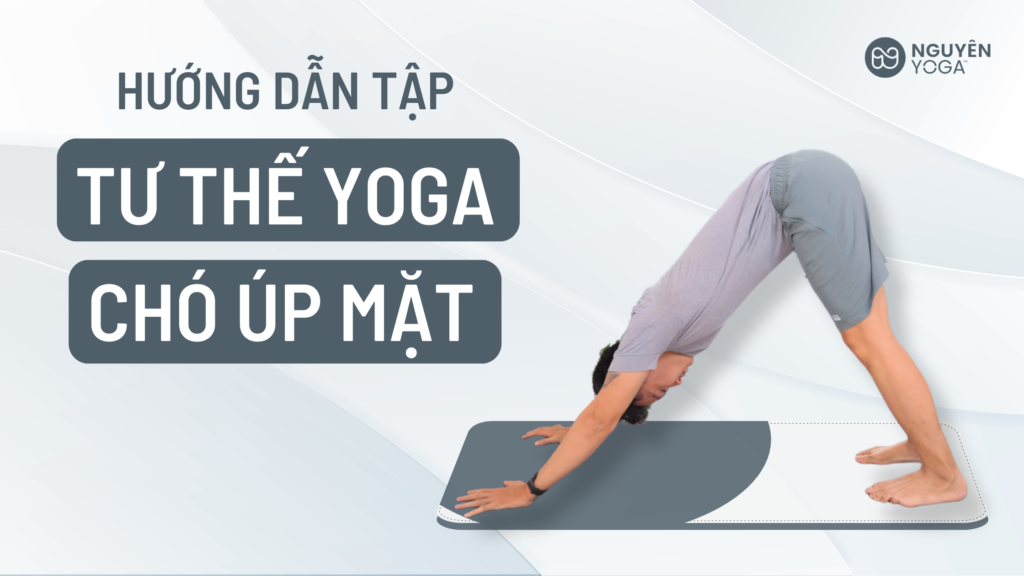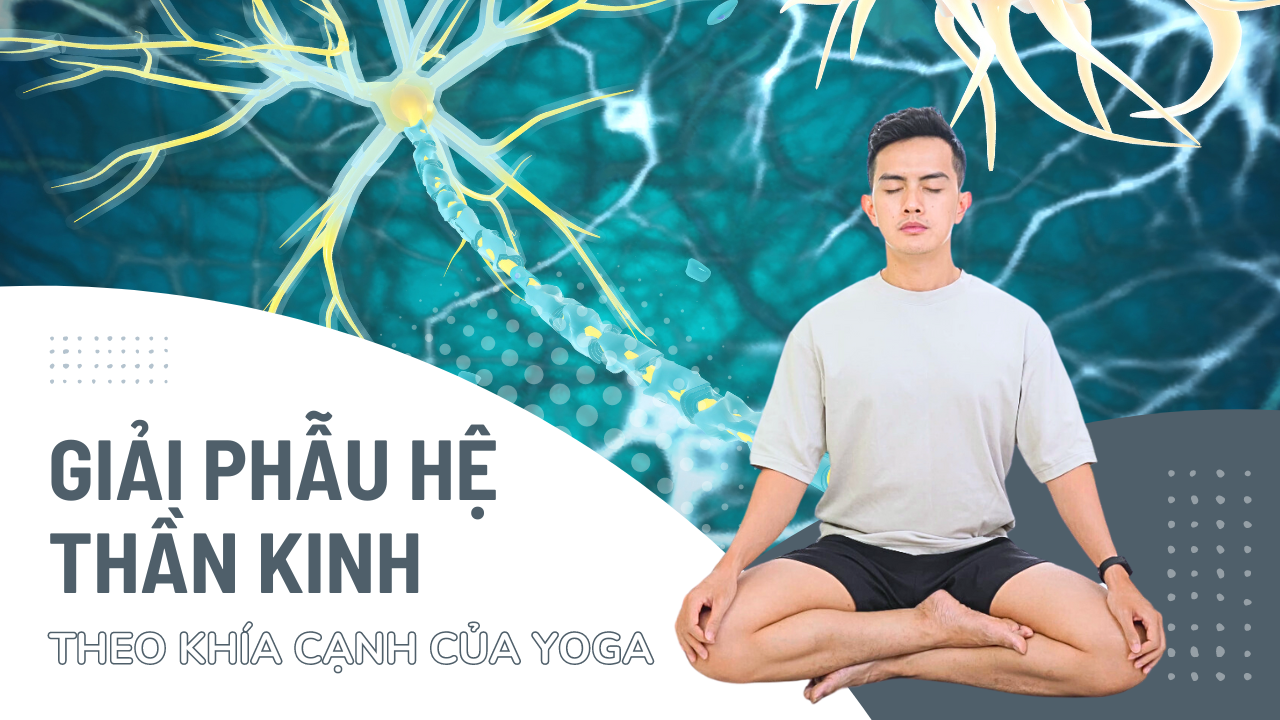Downward-Facing Dog Yoga Pose This is a very popular yoga pose, appearing a lot in yoga classes. In this article, Nguyen will share with you the great benefits of this yoga pose, and guide you in detail to conquer it.
What is Downward-Facing Dog Yoga Pose?
Downward-Facing Dog Pose (also known as ) Adho Mukha Svanasana in Pali or Downward Facing Dog in English) is one of the basic yoga poses that anyone can easily experiment with. In this pose, you start by standing on all fours, forming the shape of a dog face down on the ground. By pushing from the palms of your hands and the tips of your toes, you lift your hips up to form an inverted "V".
Benefits of Downward-Facing Dog
Strengthen the whole body
When doing Downward-Facing Dog, you must support yourself with your hands, wrists, and legs. This helps strengthen the muscles of the whole body, especially the muscles of the shoulders, arms, abs and legs.
Stretches back and thigh muscles
Downward-Facing Dog Pose stretches the muscles in the back, heels, and calves, thus helping to reduce stress, or aches and pains, and improve flexibility of the body.
Relax your mind
This is a comfortable and natural pose, combined with focusing on the breath, this yoga movement will help your mind and mind become more peaceful and quiet.
Stimulate blood cycle
Downward-Facing Dog Pose pushes up and bends the legs to help increase blood circulation from the legs to the upper body. This helps deliver nutrients and oxygen to the muscles and organs in the body.
Helps to relax the back after reclining movements
In Yoga exercises, when you've done a lot of backbend, backbend or forward bends, Downward-Facing Dog is the perfect pose to rest and relieve stress on your back. Especially with it, it also helps you to reconnect with the breath during Vinyasa or Ashtanga Yoga classes.
Who should not do Downward-Facing Dog?
People with cardiovascular problems, high blood pressure, or experiencing dizziness or convulsions should also limit or avoid the Downward-Facing Dog exercise. Because this position causes a large difference in posture, it can increase pressure in the heart and blood vessels, affecting the cardiovascular system and blood pressure.
Downward-Facing Dog Pose for Beginners
Method 1: Starting from a plank . position
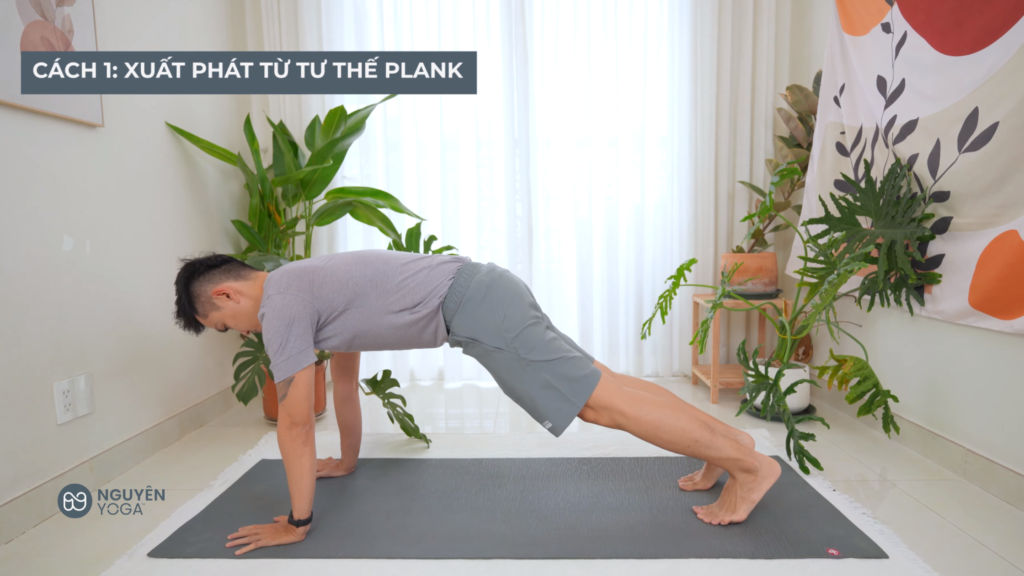
- Push your hips up behind you, lowering your heels toward the floor.
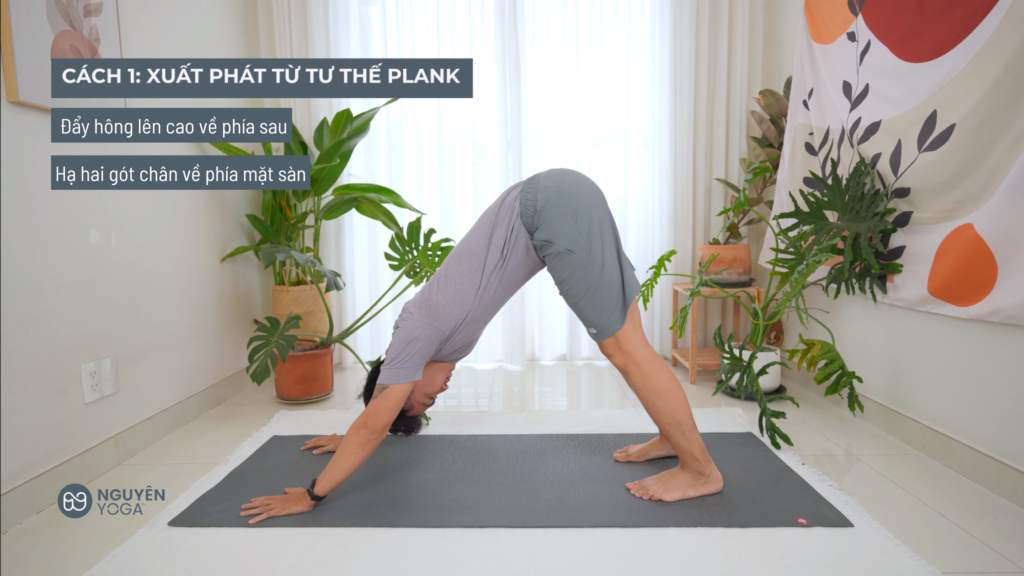
- This will work for those with flexible leg ligaments and open shoulder joints. For those of you with stiff leg ligaments and shoulder joints, method 2 will be more suitable.
Method 2: Starting from the table

- Then lift your knees off the floor, slowly pushing your hips back up high.
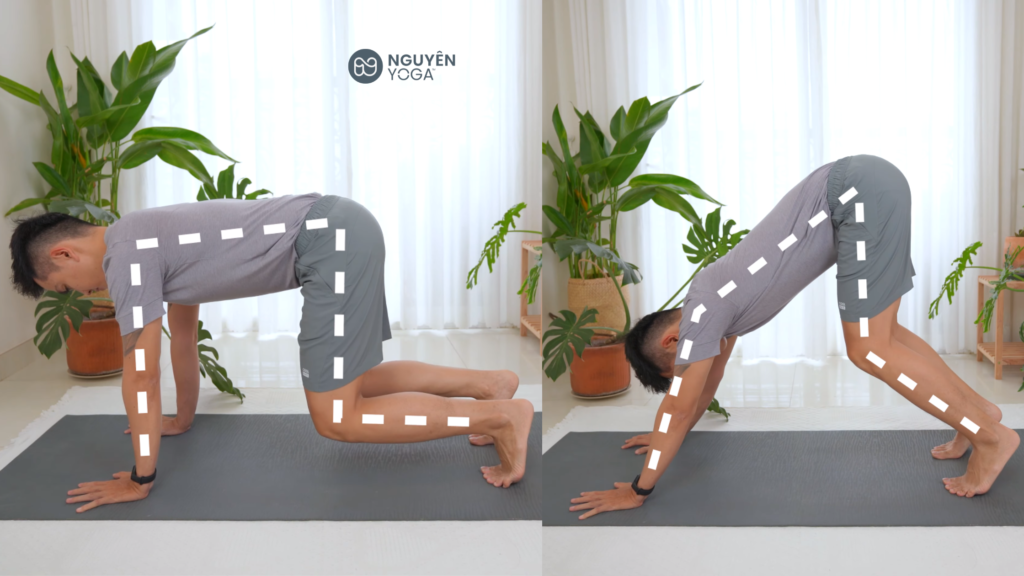
- You can tap your heels on each side toward the floor to stretch the leg ligaments.

Common mistakes when practicing Downward-Facing Dog
- The common mistake of this pose is that people with stiff leg ligaments often try to straighten their legs, causing you to lean forward, causing you neck, arm and shoulder fatigue and not getting the benefits of the pose. This.
- Instead, bend your knees and lift your heels, pushing your hips back. Then, tap the heels on each side to stretch the ligaments.
- In addition, many of you tend to shrink your shoulders too much when doing this movement, relax your shoulders slightly and rotate your shoulders outward instead of shrinking your shoulders inwards.
Nguyen hopes that his sharing will be useful for the journey to conquer Downward-Facing Dog Pose your. You can refer to more articles or video tutorials at Website Nguyen Yoga or channel Youtube Nguyen Yoga
References
How to Do Downward Dog: 5 Benefits of Downward Dog
How to Do Downward Facing Dog (Adho Mukha Svanasana) in Yoga

